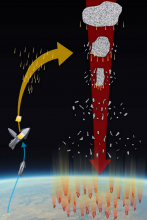Listen to today's episode of StarDate on the web the same day it airs in high-quality streaming audio without any extra ads or announcements. Choose a $8 one-month pass, or listen every day for a year for just $30.
You are here
Taihu Lake
Scientists have identified about 200 impact craters on Earth — the aftermath of high-speed collisions with big space rocks known as asteroids. Most of the craters were gouged when the asteroids hit the surface. But in some cases, the asteroids exploded high in the sky. Such a blast can carve a shallow crater and litter the landscape with debris. In fact, we know of several big airbursts that took place above Russia since the start of the 20th century.
Another possible airburst could have created the Taihu Lake basin, in southeastern China. The basin is about 40 miles wide, but only six or seven feet deep.
Geologists have debated its origin for decades. In the 1990s, some suggested an impact origin. But the basin doesn’t quite fit the profile. It’s not deep enough, and the rocks below it don’t have most of the telltale signs of an impact.
One team recently proposed an alternative: an airburst. The stress of plowing through the atmosphere could have caused an asteroid to explode high in the sky. The shockwave could have scooped out the basin.
The team found evidence of an airburst in a layer of sediments from 7,000 years ago. It contains a lot of iron-rich blobs. Many of them are spheres, cones, or rods — shapes that could have been sculpted as blobs of molten rock blasted through the sky at high speed.
The scenario hasn’t been confirmed. Still, it suggests that asteroids don’t have to hit the ground to be dangerous.
Script by Damond Benningfield





